The United Nations Refugee Agency, The Seoul Museum of Art, and Cheil Worldwide, an ad agency, have collaborated in an effort to make visible the world’s many refugees through art. The exhibit, called Invisible People was installed earlier this year in Seoul to draw attention to the plight of refugees in South Korea, including those fleeing from North Korea in the face of economic deprivation, social censure, and a brutal dictatorship.
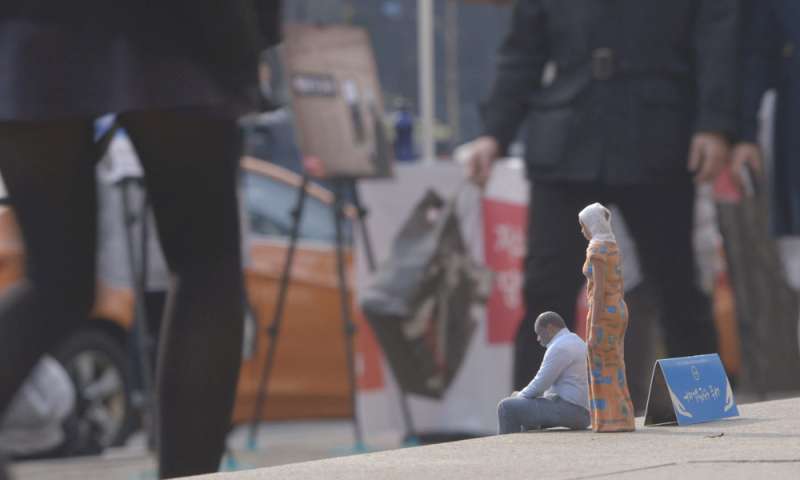 The exhibit gave faces to the suffering, and helped to counteract the atmosphere of indifference that arises when the victims remain anonymous through a series of small figurines, no larger than a hand span, that were printed, hand painted, and placed at different locations throughout the museum. They were not placed as displays, however, but rather in hidden places, that may have been overlooked, throughout the museum, just as the real people found themselves overlooked.
The exhibit gave faces to the suffering, and helped to counteract the atmosphere of indifference that arises when the victims remain anonymous through a series of small figurines, no larger than a hand span, that were printed, hand painted, and placed at different locations throughout the museum. They were not placed as displays, however, but rather in hidden places, that may have been overlooked, throughout the museum, just as the real people found themselves overlooked.
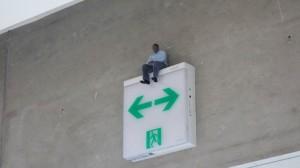
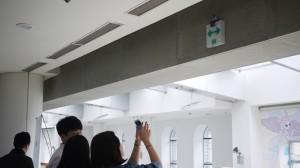 Taking a note from the personalization of curatorial theory, used in places such as The Holocaust Museum, viewers can get to know the figures by using their smartphones. Each figure links the viewer to a short video of the refugee in which they talk about their story and, more poignantly, their hopes for the future. In this way, the most advanced technologies can have a positive and humanizing impact. Shin Seok-jin addressed the sometimes-troubled relationship between advanced technology and human rights:
Taking a note from the personalization of curatorial theory, used in places such as The Holocaust Museum, viewers can get to know the figures by using their smartphones. Each figure links the viewer to a short video of the refugee in which they talk about their story and, more poignantly, their hopes for the future. In this way, the most advanced technologies can have a positive and humanizing impact. Shin Seok-jin addressed the sometimes-troubled relationship between advanced technology and human rights:
“Although 3D printing itself is a cool technology, the reality is that we have seen too many dark sides of it, such as copyright infringement issues or weapon manufacturing. Through this exhibition, we would like people to recognized 3D printing as a good-will technology. By experiencing 3D technology and touching stories, visitors would have a better understanding of refugees.”
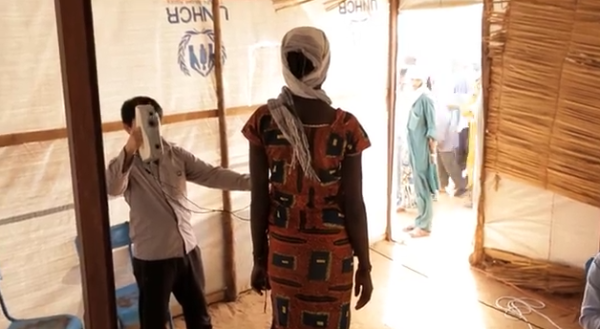 To create the figurines, real people such as Aminata Adoama and Zeinabou Mouss from Mali, allowed themselves to be scanned and then have their likeness printed for public view. With more than 35 million people estimated to be living as refugees in the world today, some of them in the most extreme conditions of deprivation, the opportunity to present them with dignity was not to be taken lightly. South Korea issued refugee status to its first person in 2001, and its refugee population has continued to grow. As South Korea has been recognized by the UN Refugee Agency as a country with advanced human rights, it is anticipated that this influx will not diminish in the near future. Therefore, it is particularly important to create a way of seeing refugees and welcoming them to join the larger society.
To create the figurines, real people such as Aminata Adoama and Zeinabou Mouss from Mali, allowed themselves to be scanned and then have their likeness printed for public view. With more than 35 million people estimated to be living as refugees in the world today, some of them in the most extreme conditions of deprivation, the opportunity to present them with dignity was not to be taken lightly. South Korea issued refugee status to its first person in 2001, and its refugee population has continued to grow. As South Korea has been recognized by the UN Refugee Agency as a country with advanced human rights, it is anticipated that this influx will not diminish in the near future. Therefore, it is particularly important to create a way of seeing refugees and welcoming them to join the larger society.
 It’s hard for many people to understand what it is like to be an ‘invisible’, living just below the surface of a society, but that is the experience of many refugees who have not found themselves able to integrate into their new homeland. As further evidence of this message, live footage of people walking past the figurines without noticing them is projected onto large screens in the main exhibit hall. As Choto Chakma, who fled to South Korea from Bangladesh in 2007, stated, “I would like to be seen and heard by the people. It is not pity that I want. I just hope to be a part of Korean society in some way.”
It’s hard for many people to understand what it is like to be an ‘invisible’, living just below the surface of a society, but that is the experience of many refugees who have not found themselves able to integrate into their new homeland. As further evidence of this message, live footage of people walking past the figurines without noticing them is projected onto large screens in the main exhibit hall. As Choto Chakma, who fled to South Korea from Bangladesh in 2007, stated, “I would like to be seen and heard by the people. It is not pity that I want. I just hope to be a part of Korean society in some way.”
These sentiments were echoed by Ouda Ag Mohamed from Mali who said, “I hope you can live in dignity and security throughout your life. I also hope peace will be restored in my country as soon as possible, so that I can return home.” While he expressed a sincere hope that the people of South Korea would never experience the life of a refugee, he did wish they could better understand his experience.
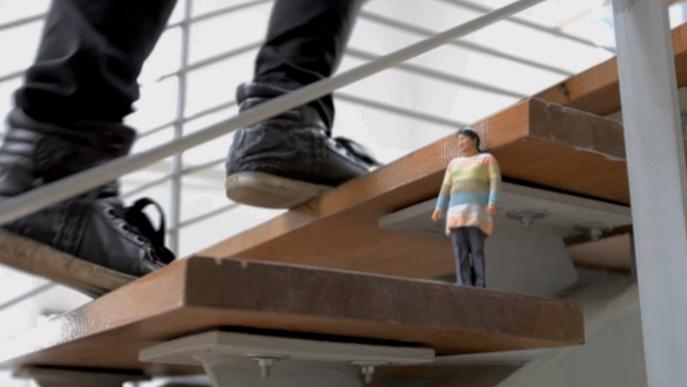 Song-ha Lee, employee at Cheil and co-director of the exhibition, told reporters:
Song-ha Lee, employee at Cheil and co-director of the exhibition, told reporters:
“Instead of telling people about refugees in a straightforward message, we were hoping to help visitors think and understand the difficulties and needs of refugees, while finding them and listening to their stories, one by one… Having met and spoken with refugees in Korea and Niger, I was really struck by the fact that their number one wish is ‘to be heard, to be seen, and to be recognized.’ Not pity, not even financial support. Now I would like to ask everybody – ‘How many invisible people did you pass today?’”
Let us hear your opinion on this exhibit at the 3D printing and refugees forum thread on 3DPB.com.
Subscribe to Our Email Newsletter
Stay up-to-date on all the latest news from the 3D printing industry and receive information and offers from third party vendors.
You May Also Like
3D Printing Unpeeled: Orbex Investment, IndoMIM and HP, Ultrasonic Waves
INDO-MIM has bought three HP Metal Jet S100 printers, operating two in India and one in Texas. This is a win for HP because the company has deep experience in...
Seurat CFO Di Paola Shares Insights on Defying Industry Trends in 3D Printing
In an industry where 3D printing public companies are grappling with troubled earnings and workforce reductions, Seurat is defying market trends by increasing its workforce sevenfold, growing from 20 to...
AMCM Debuts 8-Laser Metal 3D Printer for Prometheus Rocket and Forges Partnership with Sintavia
EOS sister company AMCM has unveiled its upcoming M 8K laser beam powder bed fusion (PBF-LB) metal AM machine. It is expected to launch by the end of 2024. Building...
Daring AM: ArianeGroup Advances Europe’s Reusable Rockets with Successful Testfire
Despite setbacks in the global space industry, such as Relativity Space’s recent failure to launch a 3D printed rocket and the closure of Virgin Orbit, European Ariane rockets are gained...































